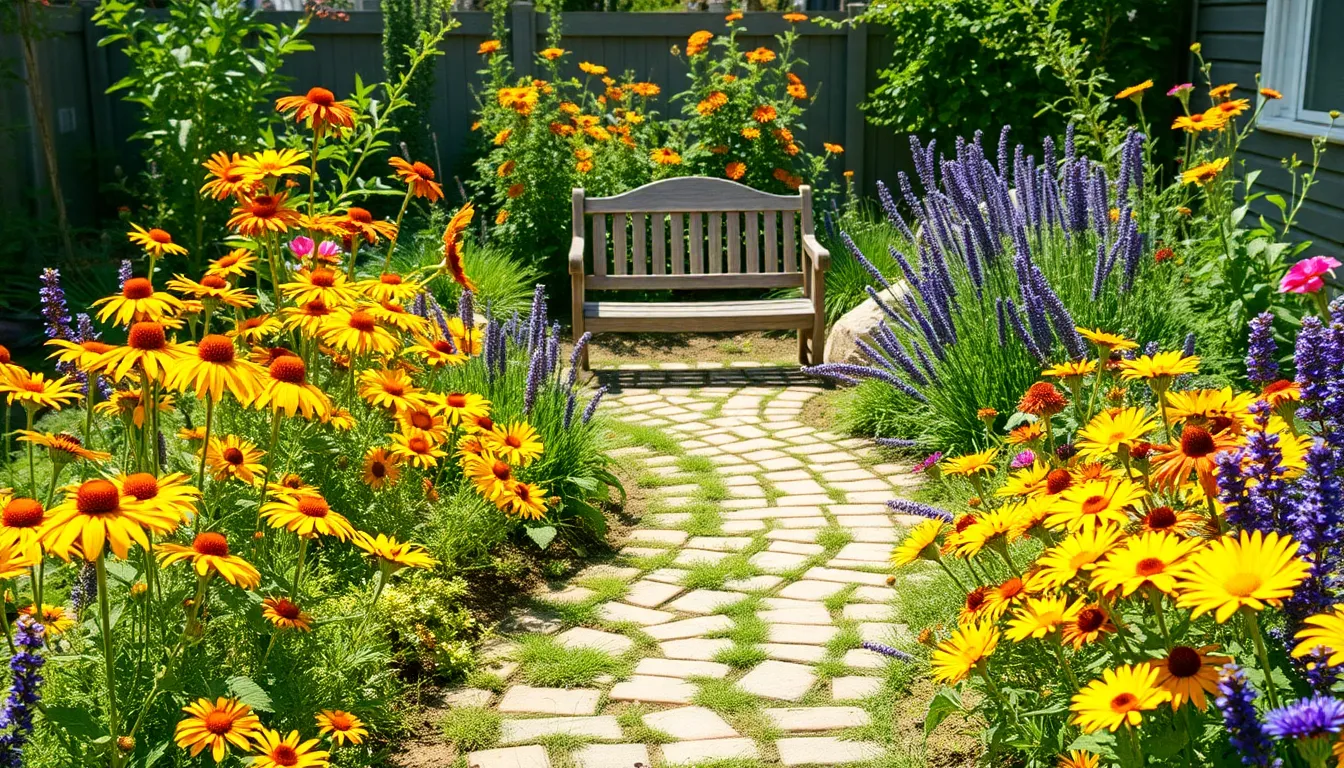Imagine stepping into your garden and being greeted by a vibrant buzz of activity—bees darting from flower to flower, butterflies fluttering elegantly, and hummingbirds zipping through the air. Designing a pollinator garden is more than just a visually stunning endeavor; it’s a vital step toward nurturing the delicate ecosystem that sustains our world. For beginners and seasoned gardeners alike, creating a haven for these essential creatures can turn your outdoor space into a lively, thriving sanctuary. It’s an invitation to participate in a meaningful, global movement right in your own backyard.
In this article, we’ll explore the essentials of designing a pollinator garden, tailored to meet the needs of both novice and experienced green thumbs. You’ll discover how to select the right plants that will beckon pollinators with their irresistible allure, ensuring your garden is a year-round feast for the eyes and a haven for nature’s hardworking heroes. Learn how to strategically arrange your garden to accommodate diverse species, and understand the pivotal role you play in supporting biodiversity. Whether your garden is a sprawling yard or a modest balcony, these insights will help you create an oasis of life and color.
By the end of this journey, you’ll be equipped with actionable steps to transform your garden into a beacon for pollinators, armed with the knowledge of how each element contributes to a thriving habitat. Get ready to dig deep into the world of pollinator-friendly gardening, where every plant you choose and every decision you make contributes to the greater good. Together, we’ll cultivate not just a garden, but a community of buzzing, fluttering life that enriches our planet. Join us as we delve into the art and science of crafting a garden that beckons the very heartbeat of nature.
Understanding Pollinator Garden Basics
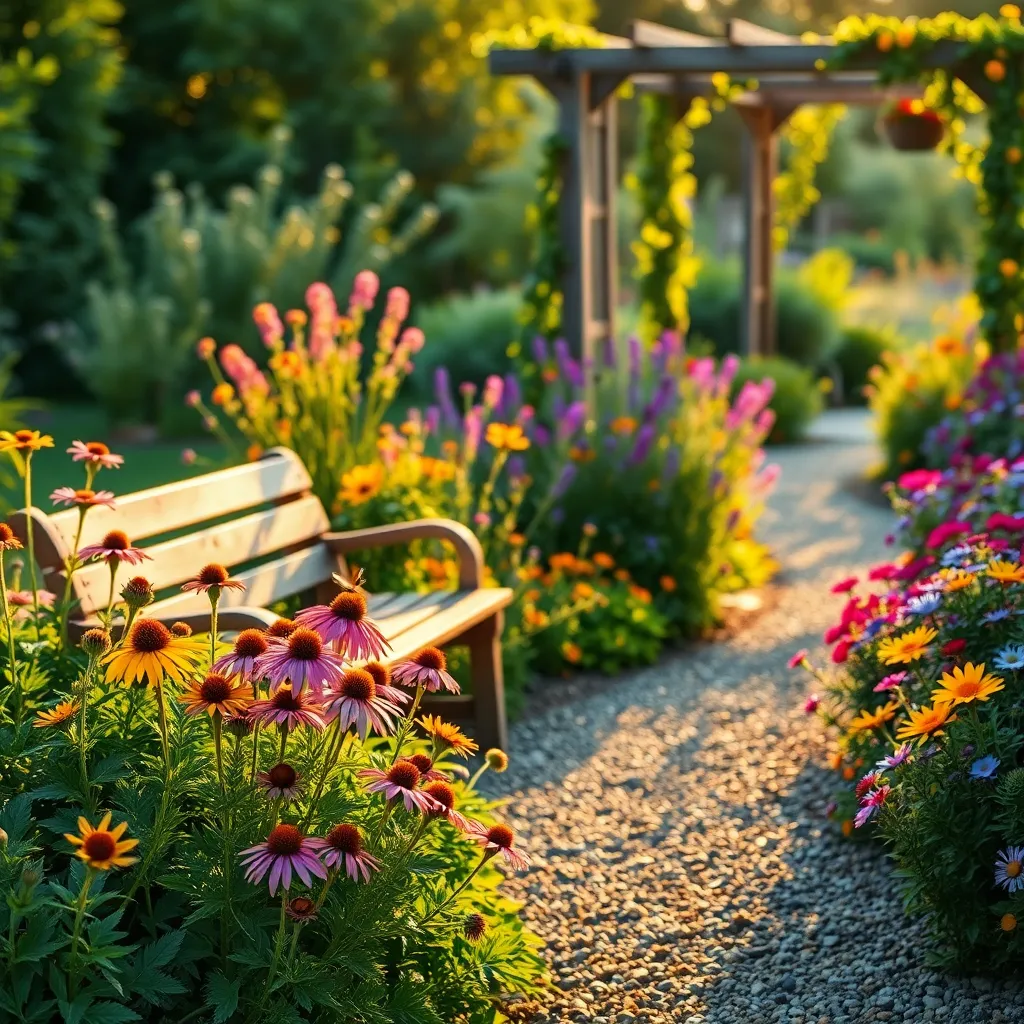
Creating a pollinator garden is a wonderful way to support local ecosystems and attract beneficial insects. Start by selecting a variety of flowering plants that bloom at different times to ensure continuous food sources for pollinators.
Focus on native plants, as they are naturally adapted to your local climate and soil conditions, making them easier to maintain. Native plants also tend to be more attractive to local pollinators, such as bees, butterflies, and hummingbirds.
When choosing plants, consider their sunlight and soil requirements to ensure successful growth. For example, many flowering species thrive in well-drained soil and require full sun, so select a spot that receives at least six hours of sunlight daily.
Watering is crucial, especially during the establishment phase of your pollinator garden. Typically, providing about one inch of water per week is sufficient, though you may need to adjust this based on rainfall and your specific climate conditions.
To enhance your garden’s appeal to pollinators, incorporate a mix of colors, shapes, and heights. This diversity not only creates an aesthetically pleasing garden but also attracts a wider variety of pollinator species.
Advanced gardeners might consider adding complementary elements like shallow water sources or small nesting areas. These additional features can further support pollinators by providing the resources they need to thrive beyond just nectar and pollen.
Choosing Ideal Plants for Pollinators
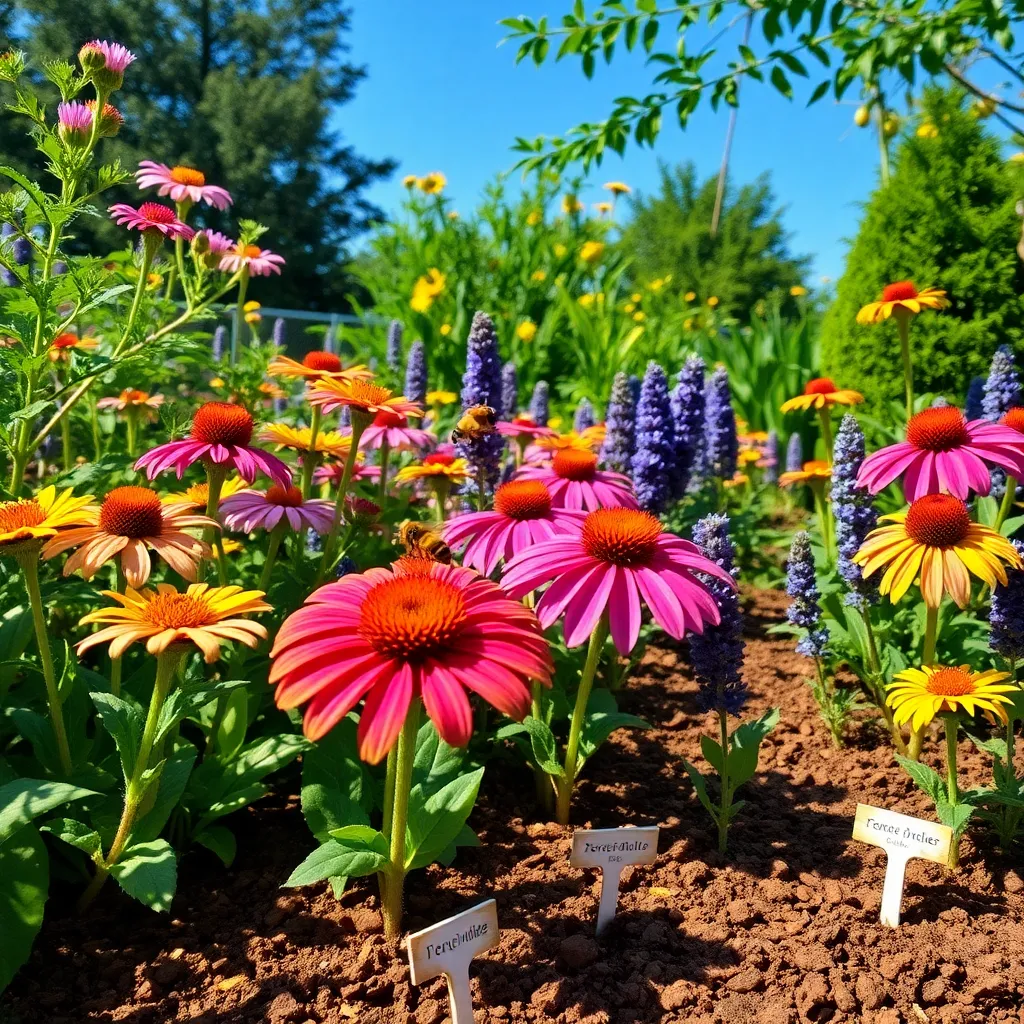
Choosing the right plants is crucial to creating a successful pollinator garden. Native plants are often the best choice because they have evolved alongside local pollinators and are well-suited to your region’s climate and soil conditions.
When selecting plants, consider including a variety of species that bloom at different times throughout the year. This approach ensures that pollinators have a consistent food source and can help maintain their populations.
It’s essential to provide a mix of flower shapes and colors to attract a diverse range of pollinators. For example, tubular flowers may appeal to hummingbirds, while flat, open flowers are more accessible to butterflies and bees.
For beginners, start with easy-to-grow plants like coneflowers and black-eyed Susans, which thrive in well-draining soil and require minimal care. Ensure these plants receive full sun for most of the day and water them regularly during dry spells.
Experienced gardeners might include more challenging plants like milkweed, which is vital for monarch butterflies. Milkweed prefers a sunny location and can tolerate different soil types, but be mindful of its spreading nature and manage it accordingly.
To boost your garden’s appeal to pollinators, avoid using pesticides, which can harm these beneficial creatures. Instead, focus on natural pest control methods, such as encouraging predator insects or using organic sprays.
Creating a Pollinator-Friendly Layout
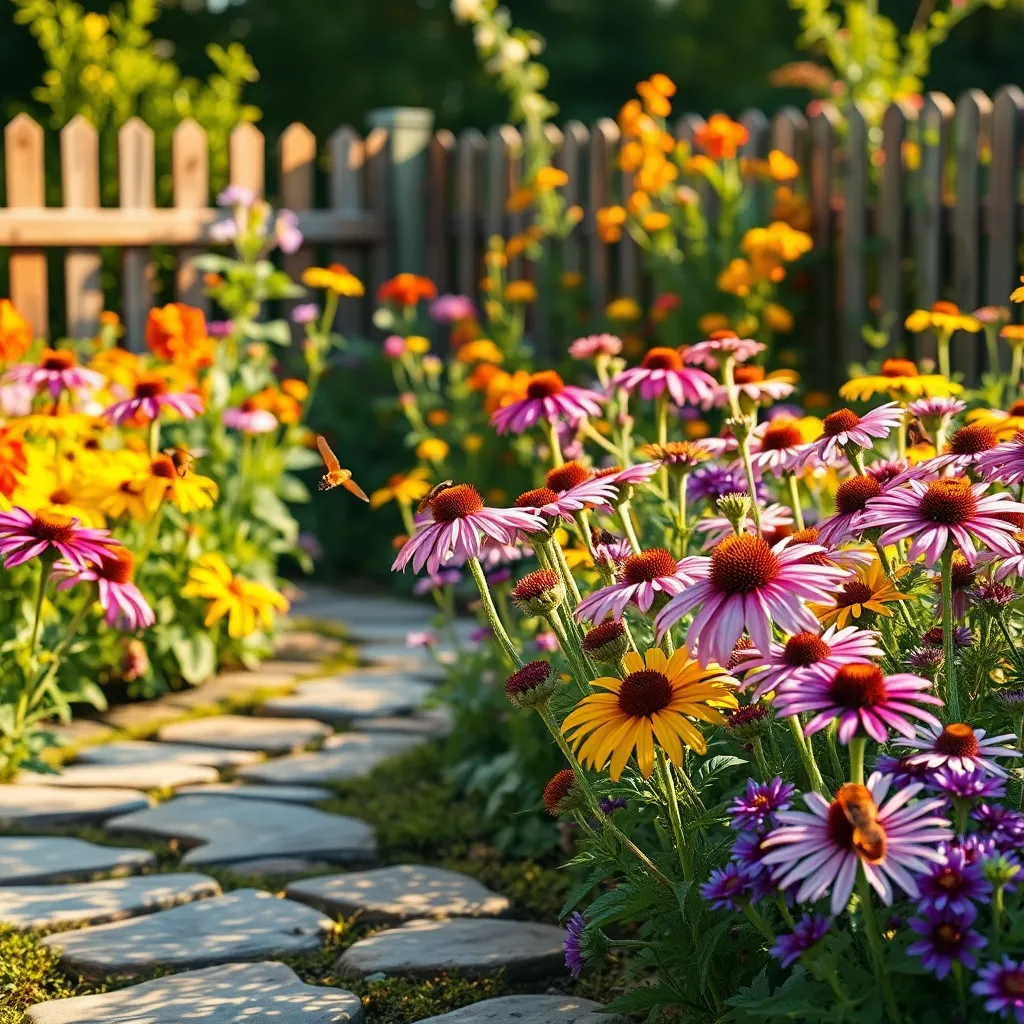
When designing a pollinator-friendly layout, it’s essential to think about the arrangement of your plants to maximize their appeal to pollinators. Grouping plants in clusters rather than scattering them can help attract more bees, butterflies, and other pollinators by providing a more noticeable target.
Consider the layout in terms of bloom seasons to ensure that something is always flowering from early spring through fall. This continuous bloom cycle provides a steady food source for pollinators and keeps your garden buzzing with activity.
Varying plant heights is another effective strategy to attract a diverse group of pollinators. Taller plants like sunflowers or hollyhocks can be placed at the back, while medium-height plants such as coneflowers or black-eyed Susans fill the middle, and shorter plants like thyme or creeping phlox edge the front. This layered approach not only creates visual interest but also caters to different pollinator preferences.
Incorporating native plants into your layout is a crucial step for success, as they are usually more resilient and better adapted to local pollinators. When selecting these plants, consult with local extension services or native plant societies to find species that thrive in your region.
For gardeners looking to go beyond basic arrangements, creating a small water feature can significantly enhance your garden’s attractiveness to pollinators. A shallow dish with stones allows pollinators to drink safely, and keeping this water source clean and filled is a simple yet effective way to support them.
Incorporating Water and Shelter Features
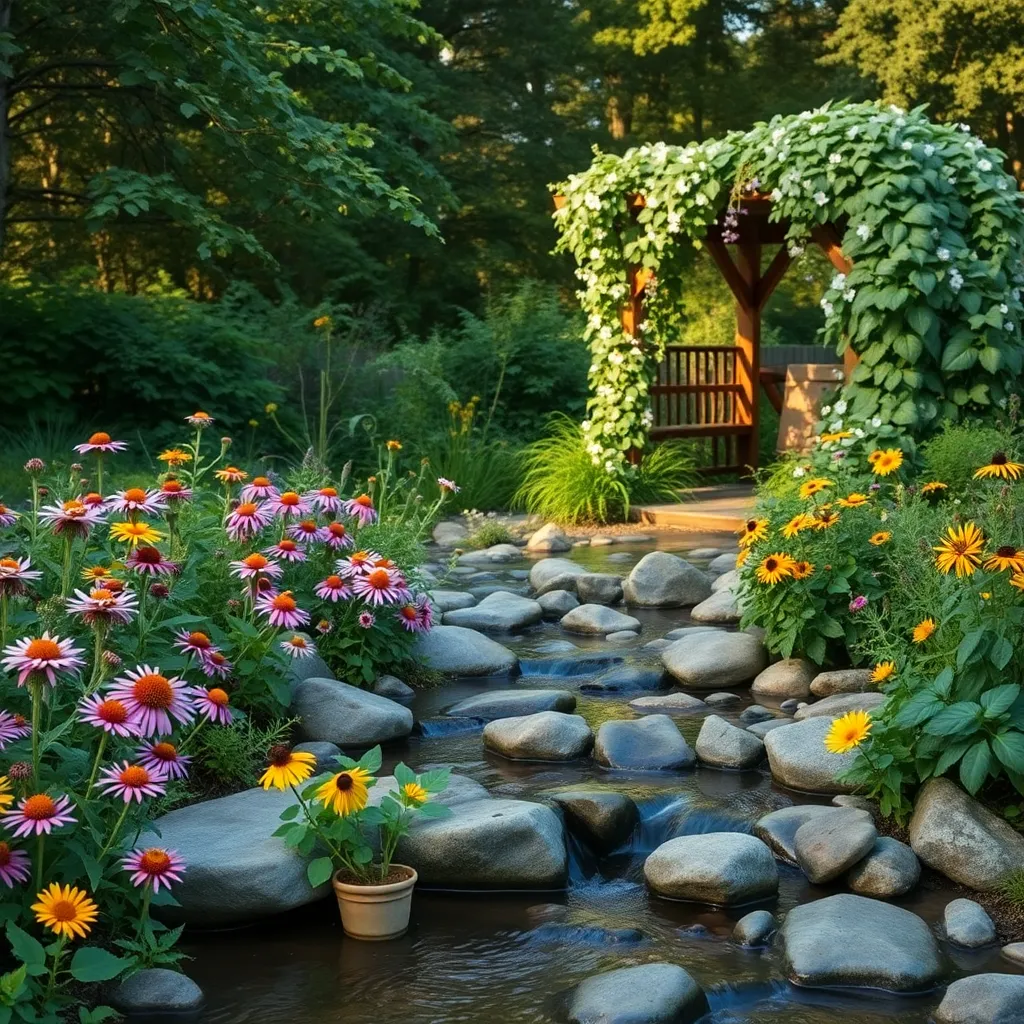
Incorporating water features into your pollinator garden can greatly enhance its appeal and functionality. A small pond or a birdbath provides a much-needed water source for bees, butterflies, and birds, especially during dry spells.
Consider installing a shallow dish or a stone basin with a few rocks for perching, as these can serve as perfect landing spots for pollinators. Ensure the water is clean and fresh, replacing it every few days to prevent stagnation and algae growth.
Creating shelter is equally important to protect pollinators from harsh weather and predators. You can use logs, brush piles, or even purpose-built bee hotels to provide nesting sites for solitary bees.
Native grasses and shrubs not only offer shade but also serve as natural windbreaks, creating a safe habitat for pollinators. These plants are often low maintenance, requiring minimal pruning and watering, making them ideal for beginner gardeners.
For more advanced gardeners, consider planting dense clusters of perennial flowers, which offer both shelter and food throughout different seasons. Ensure the soil is well-drained and rich in organic matter to support healthy plant growth.
Maintaining Your Pollinator Garden Year-Round
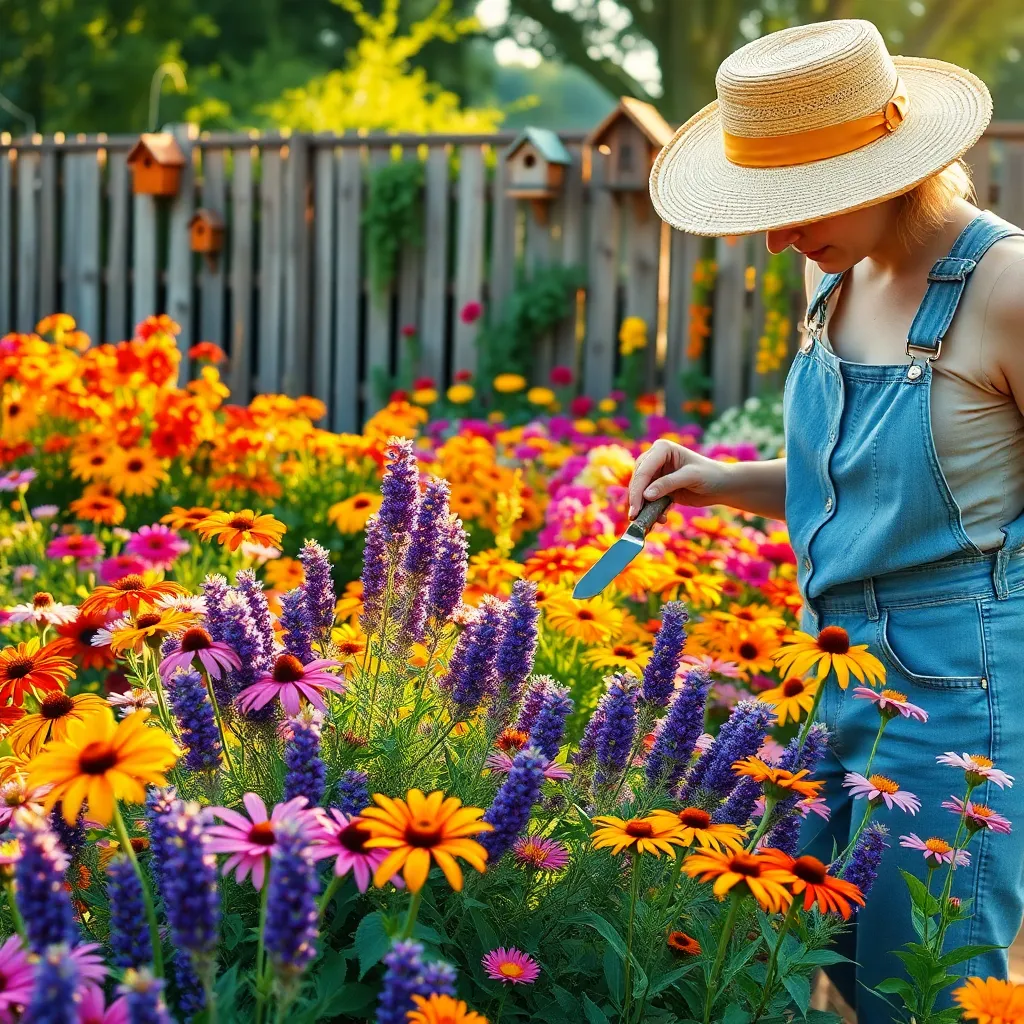
To maintain your pollinator garden year-round, it is crucial to regularly monitor and adjust your watering practices based on seasonal changes. During hot summer months, ensure your plants receive at least an inch of water per week, either through rainfall or supplemental watering.
Incorporating a variety of plants ensures that pollinators have food sources throughout the year. Opt for a mix of early, mid, and late-blooming flowers to provide continuous nectar and pollen.
Mulching is an effective way to retain soil moisture and suppress weeds, both of which are beneficial for plant health. Use organic mulches like shredded bark or straw, applying a layer two to three inches thick around your plants.
Pruning is essential for the health and appearance of your garden, and it encourages more blooms. Deadhead spent flowers regularly to promote new growth and prevent plants from going to seed prematurely.
Consider leaving some plant debris and seed heads over the winter, as they provide shelter and food for pollinators. This practice also adds organic matter to the soil as it breaks down.
For an advanced tip, install a rain gauge to accurately monitor rainfall and adjust your watering schedule accordingly. This helps prevent overwatering, which can lead to root rot and other plant health issues.
Conclusion: Growing Success with These Plants
In designing a pollinator garden, we draw parallels to nurturing our relationships through five key concepts: understanding the importance of diversity, cultivating a supportive environment, ensuring consistent nourishment, embracing seasonal changes, and fostering growth through patience and care. Just as a varied array of plants attracts different pollinators, embracing diversity in our relationships enriches our interactions. Providing a supportive environment builds trust and security, while consistent nourishment through communication and acts of kindness strengthens bonds. Recognizing the natural ebb and flow of relationship dynamics helps us navigate changes with grace, and allowing time for growth encourages deeper connections.
To start nurturing your relationship garden today, identify one small action that can enhance your connection—perhaps a meaningful conversation or a shared activity. Save or bookmark this article now to revisit these concepts whenever your relationship needs a little extra care. As you embark on this journey, remember that every relationship has the potential to flourish with dedication and love. By taking proactive steps and keeping these insights close at hand, you pave the way for a thriving, resilient partnership. Let this be the beginning of a more vibrant and fulfilling relationship narrative.

